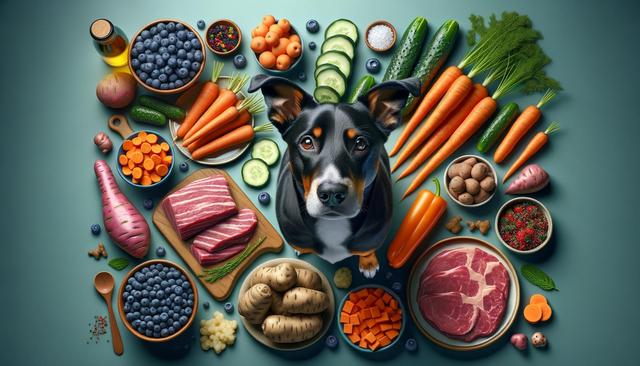Human Foods Your Dog Might Love (and That Are Actually Healthy)
Many human foods can be great for dogs, like fruits, meats, and some veggies. Always check for safety. Some foods dogs love are apples, carrots, and chicken. These snacks are healthy and fun for your pet to try.

Fruits Dogs Often Enjoy
Fruits can be a sweet and nutritious treat for dogs, offering vitamins, fiber, and hydration. However, not all fruits are safe, so it’s essential to know which ones are dog-friendly. When given in moderation and prepared correctly, fruits can be a great supplement to your dog’s diet. Some popular picks among dogs include:
- Apples (remove seeds and core)
- Blueberries
- Bananas
- Watermelon (without seeds or rind)
- Pineapple (in small amounts)
These fruits are low in calories and high in antioxidants, making them a beneficial addition to snacks or training treats. Be mindful of portion sizes, especially with fruits that are higher in sugar like bananas and pineapples. Always introduce new foods slowly and observe for any signs of allergies or digestive upset.
Healthy Vegetables That Dogs Can Eat
Vegetables are another category of human food that many dogs enjoy. They provide essential nutrients, help with digestion, and are generally low in calories. Some can be served raw, while others are better cooked to improve digestibility. Common dog-approved vegetables include:
- Carrots (raw or cooked)
- Green beans (steamed or raw)
- Broccoli (in small amounts)
- Spinach (cooked lightly)
- Sweet potatoes (cooked, no seasoning)
Carrots are especially popular because of their crunch and natural sweetness, making them ideal for teething puppies or dogs that love to chew. Sweet potatoes, rich in fiber and vitamins, make a hearty addition to meals. Avoid adding salt, butter, or spices when preparing vegetables for your dog.
Lean Meats Your Dog Will Likely Crave
Lean meats are a natural choice for dogs since they are carnivores by nature. These proteins are essential for muscle maintenance and overall health. Dogs often prefer meats that are plain, unseasoned, and cooked thoroughly. Here are some meats that are often well-received:
- Chicken breast (boiled or baked)
- Turkey (skinless, boneless)
- Beef (lean cuts, cooked)
- Salmon (cooked, no bones)
- Eggs (scrambled or boiled without oil or butter)
Chicken and turkey are gentle on the stomach and easy to prepare. Salmon, rich in omega-3 fatty acids, supports a shiny coat and healthy skin. Always ensure that meats are free from seasonings, sauces, and bones before offering them to your dog.
Dairy Products: What’s Safe and What’s Not
While not all dogs tolerate dairy well, some can handle small amounts of certain products. Dairy can be a good source of calcium and protein, but it’s important to watch for signs of lactose intolerance, such as gas or loose stools. If your dog handles dairy well, consider these options:
- Plain yogurt (unsweetened)
- Cottage cheese (low-fat)
- Hard cheeses like cheddar (in small quantities)
Yogurt can be beneficial for digestion due to its probiotic content. Cottage cheese is mild and high in protein. Cheese, in general, should be given sparingly due to its fat content. Avoid any dairy products that contain added sugars, artificial sweeteners, or flavorings, especially xylitol, which is toxic to dogs.
Foods to Avoid and Final Tips
While many human foods are safe and even healthy for dogs, there are several that should always be avoided due to potential toxicity or digestive issues. Harmful foods include:
- Chocolate
- Grapes and raisins
- Onions and garlic
- Avocado
- Macadamia nuts
These foods can cause anything from gastrointestinal distress to more serious health problems such as kidney failure or neurological issues. When introducing new foods, start with small amounts and consult your veterinarian if you’re unsure about safety. Fresh, whole foods should complement, not replace, your dog’s balanced diet. Treats should make up no more than 10% of your dog’s daily caloric intake.
Conclusion: Sharing Healthy Snacks with Your Dog
Introducing healthy human foods into your dog’s diet can be a rewarding way to enhance their nutrition and bond with them over shared snacks. From crunchy carrots to lean chicken, there are many safe and enjoyable options to explore. Always prioritize safety by avoiding harmful ingredients and consulting a veterinarian when in doubt. By understanding what’s safe and beneficial, you can treat your dog to new flavors and textures while supporting their overall health and happiness.